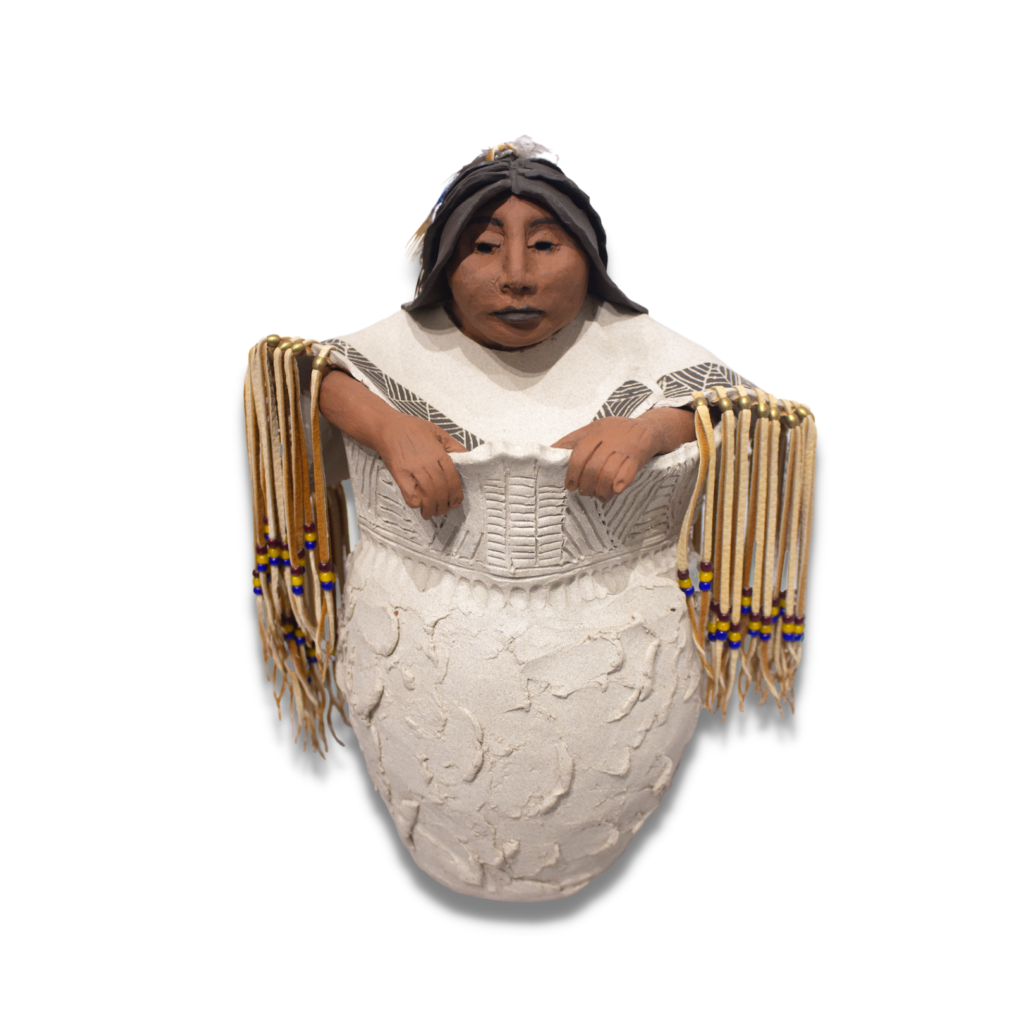Which materials were used in the making of Clay Woman?
In the gallery:
For this interactive, please use the mouse on the table next to the touch screen to click and drag your choice of 6 material images onto the sculpture. Scroll down and hit ‘check’ to see your results.
On your own electronic device:
Drag and drop your choice of 6 material images below onto the sculpture, then hit ‘check’ to see your results.
This interactive was designed by Audrey Chan ’23.

Clay Woman
Tamalyn “Tammy” Tarbell
Haudenosaunee, Kanienʼkehá꞉ka (Mohawk) Nation, Turtle Clan
Nedrow, New York, USA
2006
Glass beads, brass, bronze, clay, feathers, leather/hide, pigment
NA2006.04.LMA
Tammy Tarbell is an internationally recognized Indigenous potter and ceramic sculptor, and was the first female artist to receive the Iroquois Indian Museum’s Excellence in Iroquois Arts award in 1996. Known for the fusion of traditional Haudenosaunee techniques with modern elements in her art pieces, Tarbell derived her inspiration from her Native American identity, and highlighted what makes Haudenosaunee culture special and how it differs from the view of the public. Her work is still influential in redefining Mohawk artistic traditions, and she believed that there was a transference of an artist’s spirit into their creation during the sculpting process, in which the artist’s energy was passed into the material.
She believed that her work had the ability to communicate on both visual and emotional planes, and Tarbell personified all her doll sculptures as speaking, life-holding creations. “The dolls speak to you. They draw you in. People who look at my dolls say they stir something inside them.” This sculpture also reflects her personal experiences and is meant to help empower others. As an influential figure who redefined Kanienʼkehá꞉ka (Akwesasne Mohawk) artistic traditions, Tarbell used this sculpture to honor her ancestors and what they created.
This female-figure sculpture is primarily made of clay, but also includes multiple local materials with strong Indigenous elements like glass beads, brass, bronze, feathers, leather, and pigment. The base of the sculpture features different designs on the surface, along with Tarbell’s signature “Tarbell 06” on the bottom.
–Ray Zhang, Colgate Class of 2024
